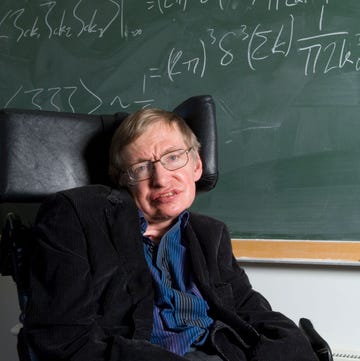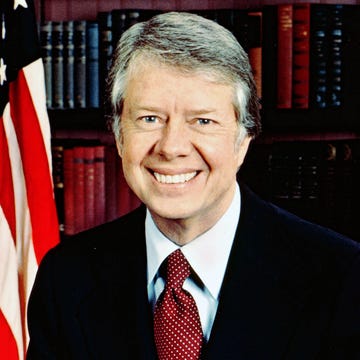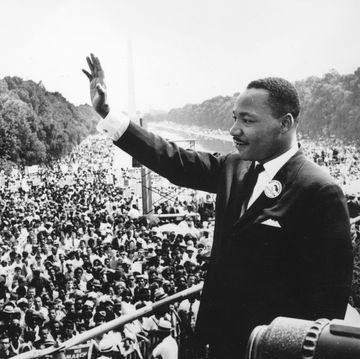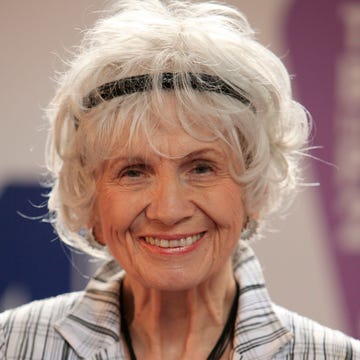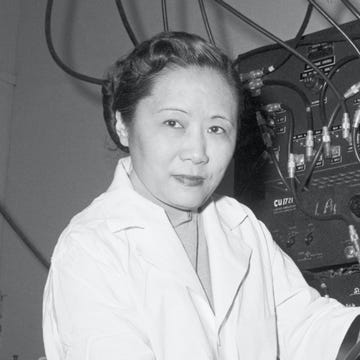1899–1961
Who Was Ernest Hemingway?
Ernest Hemingway is an author renowned for novels such as The Sun Also Rises, A Farewell to Arms, For Whom the Bell Tolls, and The Old Man and the Sea, which won the Pulitzer Prize in 1953. He won the Nobel Prize for Literature in 1954 and is one of only 13 Americans with the honor. Before becoming famous as a short-story writer and novelist, he served in World War I and worked as an ambulance driver and war correspondent. He also published noteworthy nonfiction, including A Moveable Feast.
Hemingway was an avid sportsman and traveled widely, living in places such as Madrid, Paris, Key West, and Cuba. Readers admired his exciting, complicated life, despite its convoluted and intense mixture of violence and cruelty along with love affairs and heroism, as much as they admired his writing. “There were so many sides to him, that he defied geometry,” his first wife, Hadley Richardson, said.
The author had two primary goals for his life: “I have always had the illusion it was more important—or as important—to be a good man as to be a great writer. I may turn out to be neither, but would like to be both.”
Throughout his life, Hemingway struggled with both his physical and mental health, as well as alcohol use disorder. He died by suicide at age 61.
QUICK FACTS
FULL NAME: Ernest Hemingway
BORN: July 21, 1899
DIED: July 2, 1961
BIRTHPLACE: Cicero (now Oak Park), Illinois
SPOUSES: Hadley Richardson (1921-1927), Pauline Pfeiffer (1927-1940), Martha Gellhorn (1940-1945), Mary Welsh (1946-1961)
CHILDREN: Jack, Patrick, Gloria
ASTROLOGICAL SIGN: Cancer
Early Life and Beginning Journalism Career
Ernest Miller Hemingway was born on July 21, 1899, in Cicero (now Oak Park), Illinois, a suburb of Chicago. He was the eldest son, and second child, of Clarence and Grace Hemingway’s six children. The family spent a great deal of time in northern Michigan, where they had a cabin. It was there the future sportsman learned to hunt, fish, and appreciate the outdoors.
Both of Hemingway’s parents were strong personalities, and his father physically punished him, and was often depressed. At the beginning of his son’s successful career as a novelist, Hemingway’s father died by suicide, as later did Hemingway’s brother and sister.
In high school, Hemingway worked on his school newspaper, The Trapeze, writing primarily about sports. Immediately after graduation, instead of going to college as his parents wished, nor heading oversees to war as he wanted, Hemingway went to work for the Kansas City Star, gaining experience that would later influence his distinctively stripped-down fiction and nonfiction writing style.
He once said, “On the Star you were forced to learn to write a simple declarative sentence. This is useful to anyone. Newspaper work will not harm a young writer and could help him if he gets out of it in time.”
Early Military Experience and Writing
In 1918, Hemingway wanted to enlist in World War I, but was ineligible due to his weak eyesight. Instead, he served overseas as an Italian Army ambulance driver. After volunteering to go to the front lines, Hemingway sustained a concussion and other injuries from 220 shards of shrapnel, which landed him in a Milanese hospital. He was awarded the Silver Medal of Valor from the Italian Government for his “admirable spirit of fraternity.”
There, Hemingway, met an older American nurse named Agnes von Kurowsky, who returned his feelings. She was transferred to a Florence hospital, and they wrote dozens of letters to each other. Although already engaged to an American back home, she accepted Hemingway’s marriage proposal, though the relationship didn’t last. However, their relationship inspired his earliest fiction, which he wrote on Red Cross stationery while hospitalized in both Europe and then when he returned to Illinois—only 20 years old.
He returned to a job at the Toronto Star, and eventually got word from Agnes that she didn’t love him and would marry another man. Devastated, he began to consistently drink alcohol, and, as he said, “rushed” two or three girls at a time. His behavior appalled his parents, and while they didn’t want him in their home any longer, they didn’t completely cut contact with him. So, he moved to Chicago and began to write fiction. Despite an appearance of bravado, after the war, Hemingway would be afraid of sleeping alone and of the dark for the rest of his life.
This early part of his adulthood served as a template for the rest of his life. Hemingway continued to take part in, and write about, violent conflicts for decades, including the Spanish Civil War and World War II, where he witnessed both D-Day and the liberation of Paris. He was awarded the Bronze Star for his World War II service.
Despite his willingness to risk his life, as well as his physical and mental health, Hemingway hated war. In fact, it was precisely because of his wartime experiences he wrote, “Never think that war, no matter how necessary, nor how justified, is not a crime.”
Wives, Children, and Grandchildren
From the beginning of his adult life, Hemingway had complicated romantic and family dynamics. He always had the next woman in his life before he let go of the first one, and often married his next wife less than a few weeks after divorcing the previous woman.
He was married four times. First to Hadley Richardson in 1921. The couple’s divorce was finalized in April 1927, and he married Pauline Pfeiffer in May 1927. The couple divorced in November of 1940 and he married Martha Gellhorn, considered one of the greatest war correspondents of all time, just 17 days later—but they divorced in 1945. He married Mary Welsh in 1946, and she remained his wife until his death, although that marriage was often unhappy and violent.
First wife Hadley Richardson and son Jack
As a young man in Chicago, Hemingway met Hadley Richardson, the woman who would become his first wife. The couple married and quickly moved to Paris, where Hemingway worked as a foreign correspondent for the Star.
In 1923, the couple moved to Toronto where Richardson gave birth to their son, John “Bumby” Hadley Nicanor Hemingway (later Jack), while Ernest was in New York. Hemingway didn’t feel ready to be a father, and frequently traveled without his wife and child. When they returned to Paris, he decided to give up newspaper writing and pursue fiction writing full-time.
There are many stories and books inspired by Hemingway’s marriages and love affairs. For example, Richardson moved with him to Paris shortly after their wedding. During this time, she lost the beginning of his first novel and some short stories, which Hemingway wrote about in A Moveable Feast. After they returned to Paris, Hemingway had an affair in 1926 with her best friend, Pauline Pfeiffer, which caused their divorce, and whom he later married. All of the royalties from his first novel went to Richardson, as Hemingway had intense guilt about the way he treated her.
Hemingway’s son Jack also became a writer after serving and being captured by the Germans during World War II. He eventually lived in Ketchum, Idaho, near his father.
Jack’s children, Ernest’s grandchildren, included Joan Whittlesey “Muffet” Hemingway, Margot (later Margaux) Louise Hemingway, and Mariel Hadley Hemingway. His daughters accused him of sexual abuse. Margaux was a supermodel and died by suicide in 1996. Joan is an author and actor, and Mariel, also a successful model and actor, made a documentary about her family called “Running from Crazy,” which explored the family’s history of substance abuse, mental health disorders, and suicide.
Second wife Pauline Pfeiffer and children Patrick and Gloria
After World War II, Pauline Pfeiffer, who eventually became Hemingway’s second wife, traveled with the Hemingways throughout Europe, and also worked in Paris as a writer for Vogue, as well as other magazines. Richardson watched them fall in love, although was clear that Pfeiffer befriended her first and then stole Hemingway from her. Pfeiffer and Hemingway had two children, Patrick in 1928 and Gloria (assigned male at birth and given the name Gregory) in 1931. Eventually, they moved to Key West, Florida, and summered in Wyoming, but their marriage did not last long.
Gloria was often estranged from father Ernest. In 1951, Gloria was arrested for entering a women’s bathroom dressed as a woman, due to antiquated ordinances in place at the time that targeted gender nonconforming individuals. Ernest and ex-wife Pfeiffer argued intensely about the arrest, and Pauline died the following day after an undiagnosed adrenal tumor burst.
Patrick was devoted to his father and took care of his literary estate until his death in 2025.
While he was still married to Pfeiffer, Hemingway continued to travel extensively, including big-game hunting in Africa, bullfighting in Spain, and deep-sea fishing in Florida. Then, in 1937, he returned to Spain to cover the Spanish Civil War and met fellow war correspondent Martha Gellhorn, who had an extraordinary writing career of her own.
Third wife Martha Gellhorn
Gellhorn had traveled extensively to cover news stories, and had also lived at the White House with Franklin and Eleanor Roosevelt. She met Hemingway in 1936 and together they traveled to Spain in 1937 and 1938. During this time, she traveled to Germany and Czechoslovakia. She reported on the war from all over the world, including Burma.
Most impressively, pretending to be a nurse, she was the only woman to cross the English Channel during the D-Day invasion. She landed with soldiers near Omaha Beach. Because women weren’t allowed to cover this type of action, she was arrested and lost her war correspondent accreditation. Once released, she flew to Italy, saying later, “I followed the war wherever I could reach it.” She was also among the first journalists to report from a concentration camp.
After living together throughout the late 1930s, Gellhorn and Hemingway married in November 1940 and purchased a farm near Havana, Cuba. Gellhorn continued to travel, though, throughout the war, and Hemingway resented not only her travels, but her success, writing to her: “Are you a war correspondent, or wife in my bed?” He had tried to stop her from traveling with the D-Day invasion troops. They divorced in 1945.
Gellhorn continued to work as a war correspondent through the Vietnam War and other very dangerous situations. She wrote many books, and books and movies have been written about her and her relationship to Hemingway.
Fourth wife Mary Welsh
Toward the end of World War II, Hemingway met another war correspondent, Mary Welsh. The couple married in 1946. They lived in Cuba and, in 1959, moved to Ketchum, Idaho. After Hemingway’s death, Welsh edited A Moveable Feast from an unfinished manuscript and the memoir was published posthumously in 1964, thanks to her work. She published her own autobiography, How It Was, in 1976.
The Lost Generation
After World War I, Hemingway moved to Paris with his first wife, Hadley Richardson, and became a key member of the artistic group that author Gertrude Stein would famously call “The Lost Generation.” Hemingway used the term in his 1926 novel The Sun Also Rises. With this phrase, Stein was referring to the feeling of hopelessness that anyone who had lived through “the war to end all wars” carried within them. Ironically, this inner sadness was often hidden by a love of frivolity, including drinking, sexual freedom, and the ability to travel and live cheaply.
With Stein as his mentor, Hemingway made the acquaintance of many great writers and artists of his generation, such as F. Scott Fitzgerald, Ezra Pound, Pablo Picasso, and James Joyce. He also traveled throughout Europe, including to Pamplona, Spain, in which he discovered a lifelong passion for bullfighting.
Novels and Short Stories
Hemingway was famous for his direct and terse writing style, which grew directly out of his journalism work. Even in his fiction writing, he rarely used adjectives and adverbs, and relied on repetition and clarity to create atmosphere and mood. He describing his writing as the “Iceberg Theory,” believing that the omitted part of a story, i.e., the bottom of the iceberg, was the strongest part and that readers would understand the intention without having to be directly told what a story meant or its overarching theme. Because of this stripped down style, many of his greatest works are novellas.
For example, “Hills Like White Elephants,” a short story included in Men Without Women, is about an abortion, but the word is never mentioned. Instead, the male protagonist keeps pushing the woman to do something and minimizing the experience. At one point, she responds, “Would you please please please please please please please stop talking?”
This is another significant style element of Hemingway’s—the use of repetition, often of words considered unimportant, such as in the famous first paragraph of A Farewell to Arms which includes the word “and” 15 times:
“In the late summer of that year we lived in a house in a village that looked across the river and the plain to the mountains. In the bed of the river there were pebbles and boulders, dry and white in the sun, and the water was clear and swiftly moving and blue in the channels. Troops went by the house and down the road and the dust they raised powdered the leaves of the trees. The trunks of the trees too were dusty and the leaves fell early that year and we saw the troops marching along the road and the dust rising and leaves, stirred by the breeze, falling and the soldiers marching and afterward the road bare and white except for the leaves.”
In terms of theme, Hemingway’s fiction always features a specific type of man—brave, strong, and what many consider to be stereotypically masculine in the face of violence, including war and physical challenges, such as bullfighting and sport fishing. The protagonists are also deeply wounded, sometimes physically, but always emotionally, and often because of love. They are complicated despite speaking simply and directly. The women are as strong and opinionated as the men, and he directly explored the similarities and differences between men and women in much of his work. Hemingway sometimes wrote about men witnessing the courage and pain of women during sex, rape, pregnancy, miscarriage, abortion, and childbirth, but he often described those events as unimportant and not worthy of a real man’s attention. He was, nevertheless, lauded for realistically describing these actual events.
Similarly, Hemingway used the stereotypes and offensive language of his time to write about other races and religions, including Black people and Jewish people. Due to this, many contemporary writers and scholars do not consider him worthy of attention.
A prolific writer, some of Hemingway’s greatest works, including Islands in the Stream, were published after his death.
Nonfiction Books
Hemingway, who began his career as a journalist, also focused on nonfiction writing that drew from his own life and experiences. His fiction and nonfiction writing style were similar, down to the characters and plots. His nonfiction stories often featured people and stories that were more fantastic than their fictionalized counterparts. No novelist could invent characters more interesting and larger-than-life than Fitzgerald or his third wife, Gellhorn.
In A Moveable Feast, he describes his famous friendships with Dos Passos, Fitzgerald, Sylvia Beach, and Gertrude Stein, about whom he said, “She got to look like a Roman emperor and that was fine if you liked your women to look like Roman emperors.” The book is filled with their wild adventures and exaggerated circumstances. (For example, they weren’t as poor as he claimed, as his first wife, Hadley, inherited money on which they lived.)
Even his titles reflect his respect for both genres and the similarities of their content, such as Hills Like White Elephants (short story) and Green Hills of Africa (nonfiction). His fiction and nonfiction are often sold together, because they are so closely related in both subject and style.
Personal Struggles and Death
Hemingway had depression and was treated for numerous health conditions such as high blood pressure and liver disease, which doctors attributed to heavy drinking throughout his life. Hemingway also sustained several injuries during his adventures in Africa, including surviving multiple plane crashes. Due to his war injuries and the concussions he suffered throughout his life, some experts think Hemingway may have had Chronic Traumatic Cencephalopathy (CTE), a brain disease linked in part to repeated traumatic brain injuries.
Hemingway and Mary permanently moved to Idaho in 1959, where he continued to battle with deteriorating mental and physical health. He was twice treated at the Mayo Clinic in Rochester, Minnesota, for depression, once in December of 1960, returning home in January 1961 and again in April and May of 1961. Hemingway died by suicide in July of 1961.
Legacy
Hemingway left behind an impressive body of work and an iconic style that still influences writers today. His personality and constant pursuit of adventure loomed almost as large as his creative talent.
When asked by writer George Plimpton about the function of his art, Hemingway proved once again to be a master of the “one true sentence.” He said, “From things that have happened and from things as they exist and from all things that you know and all those you cannot know, you make something through your invention that is not a representation but a whole new thing truer than anything true and alive, and you make it alive, and if you make it well enough, you give it immortality.”
QUOTES
- Never confuse movement with action.
- There is no friend as loyal as a book.
- Happiness in intelligent people is the rarest thing I know.
- Always do sober what you said you’d do drunk. It will teach you to keep your mouth shut.
- An intelligent man is sometimes forced to be drunk to spend time with fools.
- The best way to find out if you can trust somebody is to trust them.
- Write drunk, edit sober.
- All good books are alike in that they are truer than if they had really happened and after you are finished reading one you will feel that all that happened to you and afterwards it all belongs to you: the good and the bad, the ecstasy, the remorse and sorrow, the people and the places and how the weather was. If you can get so that you can give that to people, then you are a writer.
- All thinking men are atheists.
- It’s good to have an end to journey to; but in the end it’s the journey that matters.
Fact Check: We strive for accuracy and fairness. If you see something that doesn’t look right, contact us!
Since 2010, Donna Raskin, a longtime writer and editor, has taught history classes at the College of New Jersey. As a child, she read and re-read every book in the Childhood of Famous Americans series. As an adult, she collects fashion history books and has traveled to Paris on a fashion history tour. In addition to contributing to Biography.com, she is the senior health and fitness editor at Bicycling and Runner’s World.





